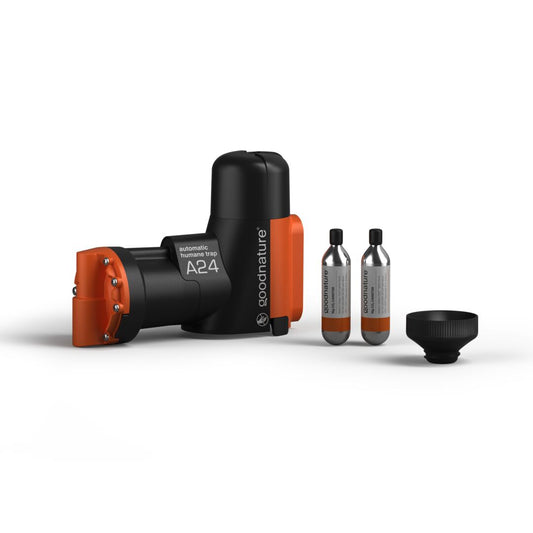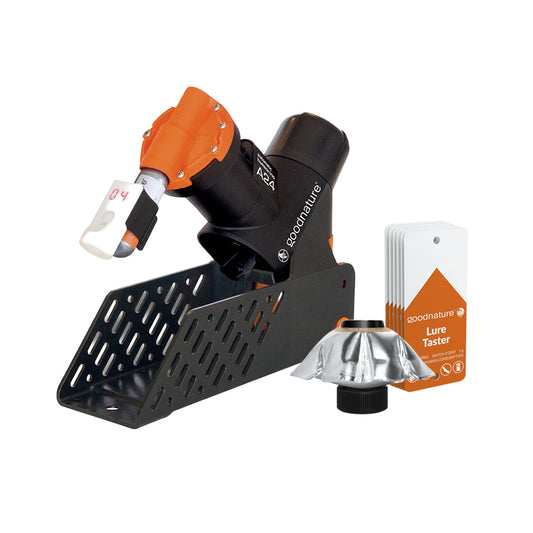
Why Using a Non-Toxic Rat Trap Is a Must for Many Homeowners
Few pests can be as annoying and destructive as the common rat that often infiltrates homes across the United States.
Rats can cause so much damage.
They will gnaw through shirts and other articles of clothing that may not have been properly stored. Some rats chew electrical wires strewn around inside your home. More often than not though, rats will make their presence felt inside your home by tearing open packages of food and helping themselves to the contents.
Oh, and let’s not overlook the dangers they pose as some of them can carry diseases that can be harmful to people and animals inside the home.
Needless to say, many homeowners want nothing to do with rats. As soon as they see one around their property, they waste little time addressing that issue.
The solution many people opt for is to use rat poison to get rid of their rat problem. You may have thought of going down that route as well.
Before doing that though, there are some things you need to consider. To be more specific, you need to consider whether the potential benefits of using rat poison outweigh the risks associated with it.

How Dangerous Is Rat Poison?
First off, you need to know that there are different kinds of rat poison.
Per the Pet Health Network, some of the most notable types of rat poison are anticoagulant rodenticides, cholecalciferol, bromethaline, and phosphides.
These poisons have varying effects on rats. More importantly, they can also affect animals such as cats and dogs in different ways.
For example, an anticoagulant rodenticide can be deadly if it is consumed by a pet cat or dog, but it won’t kill them right away. The cat or dog in question must first ingest a toxic amount of the poison and even then, you can still save your pet if you are able to act quickly enough.
Bromethalin is even more dangerous because it does not have an antidote.
Cholecalciferol can be more hazardous to your pets because even a small dose of it can turn out to be fatal. Plus, there’s no antidote for it.
Rat poisons that are made using phosphides are arguably the most dangerous ones on the market. Beyond the dangers it presents to the pets you may have around the home, phosphides can also be toxic to humans.

How Does Rat Poison Lure Its Prey?
You would think that containing such dangerous chemicals would make rat poison unattractive to animals, but the people who pioneered this toxic item found a clever way to get around that problem.
According to the National Pesticide Information Center, specific variants of rat poison are often laced with additional ingredients that make them more alluring not just to rats, but also to other animals. The anticoagulant rodenticides are the ones that are the most concerning here.
Ingredients used to make these anticoagulant rodenticides more appealing to animals include peanut butter and grains. As you know, cats and dogs are also quite fond of those ingredients and will not hesitate to chow down on them.
Leave the rat poison in an area where it can be easily reached by your pets and you can’t be surprised if you have to make an emergency trip to the veterinarian not long after.
In addition to pets, many wild animals can be victims of deadly rat poison. The animal does not have to eat the poison directly, but they can become ill through secondary poisoning. Secondary poisoning is when an animal eats a poisoned rodent and becomes sick. The animal most often will die – and suffer a slow and painful death. This occurs most frequently with birds of prey such as owls and hawks. Many other animals like mountain lions, coyotes and bobcats also become victims of rat poison.

Should You Use Rat Traps That Feature Poison inside the Home?
Containers of rat poison often include tips for how they can be used safely. These tips will tell you where you need to locate the rat poison to keep them out of the reach of children while simultaneously retaining their effectiveness as a deterrent to rats who want to wreak havoc inside of your household.
Some of the instructions for using rat poison will tell you to place them in a certain area or even require you to use them with a particular item to ensure that they will not be accessible to pets and small children. While following those tips will work to cut down on the threat presented by rat poison, there is still a level of risk involved.
The container holding the rat poison may be bumped into causing pieces to fall to the floor where pets and kids can find them.
Another thing you need to consider with rat poison is that they don’t take effect right at the moment they are consumed. As highlighted by this article from National Geographic, after rats consume the poison, they can still run off and find a place to hide.
Because of that, there may be dead rats that end up in the nooks and crannies of your home that you’ll have a hard time removing.
The point here is that there are significant downsides that come with using rat poison regardless of how carefully you handle it. Ultimately, it’s up to you to decide if they are worth the trouble.
If you decide that you would rather not worry about rat poison, then you may want to consider using poison-free traps.
Why Poison Free Rat Control Could Be the Solution You’re Looking For
There are several reasons why it’s worth considering poison-free traps.
For one, they may be required in the area you’re living in. According to PetMD, there are boarding facilities that prohibit the use of rat poison. If you want to control your pest problem, you have no other option beyond relying on rat traps that don’t use poison.
Going back to what was highlighted by the National Geographic piece from earlier, it also makes more sense to use poison-free rat control from the perspective of cleaning up. This is especially true if you have noticed that rats have a nesting area in your home.
Their dead bodies may end up stuck in that nesting area after they ingest the poison and you will have to deal with the difficult ordeal of getting them out. That will not be a pleasant experience.
A problem such as that is not one you will have to struggle if you use automated traps. These traps will kill the rat right where it stands and you can just return to that spot when the time comes to clean up.
Once you run out of rat poison, you will have to go to the store to replenish your supply. Goodnature traps don’t use any type of consumable and they don’t rely on electricity either. After installation, they will keep working as long as there are rats that are curious enough to check on them.
Goodnature traps are also more quick-kill than rat poison. They strike and kill the pests right away whereas poison can cause those critters to suffer for a while.
Most importantly, you can install automatic traps without worrying that they will endanger any pets or little kids in your home.
To sum things up, using automatic traps is a good idea because:
- They are permitted in just about every living space.
- They leave carcasses that are easy to remove.
- They are more economical.
- They are quick kill.
- They are safer.
Conclusion
For the longest time, using poison stood out one of the only alternatives to get rid of rats that have started to roam free and cause trouble inside your home. Unfortunately, they're an inhumane and dangerous method for those concerned with the well being of their pets, children, and other wildlife.
With the Goodnature A24 rat and mouse trap you will be able to manage a rat infestation with a poison-free, quick kill, and automatic alternative. See how well it can work for your household!





